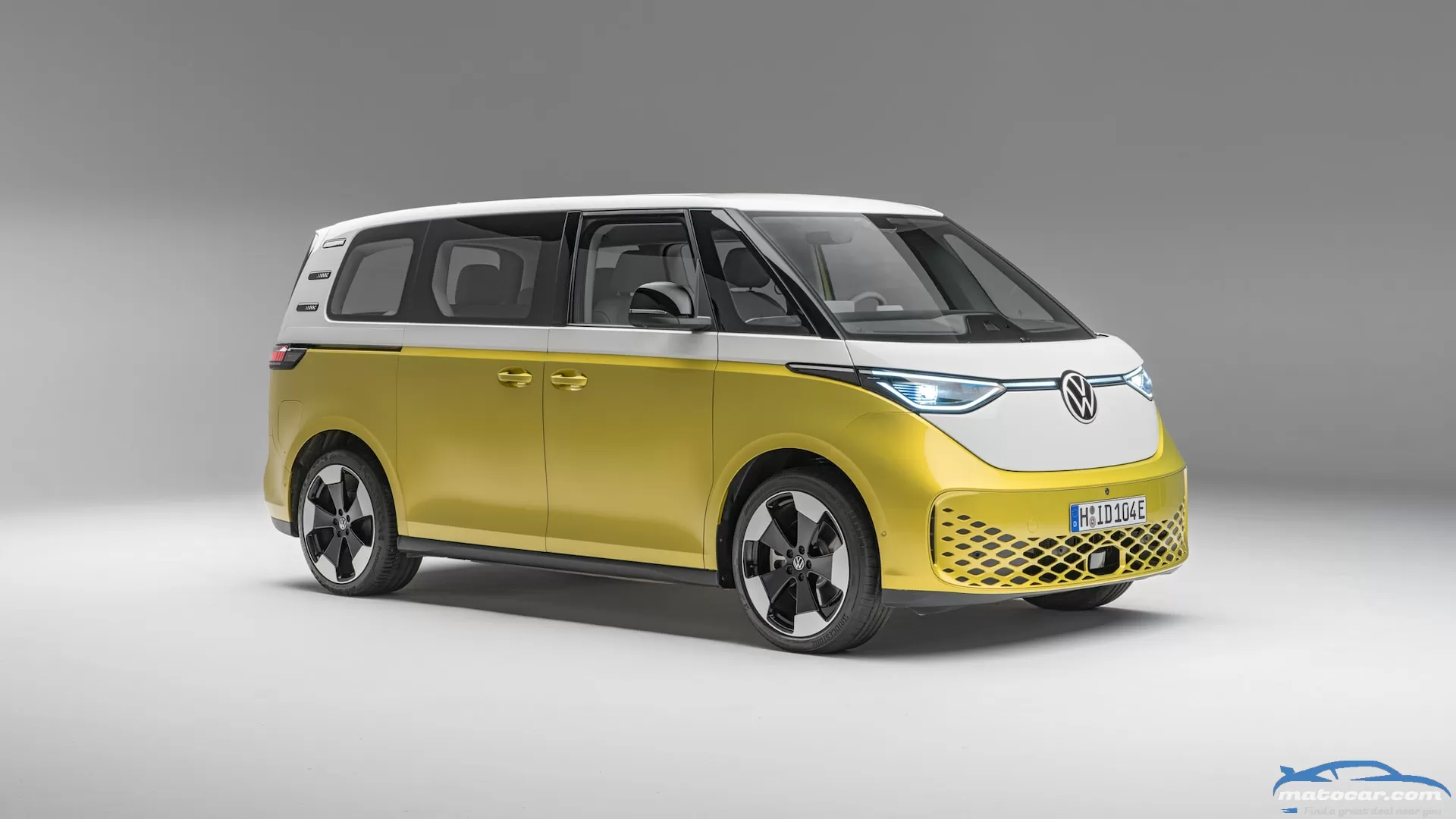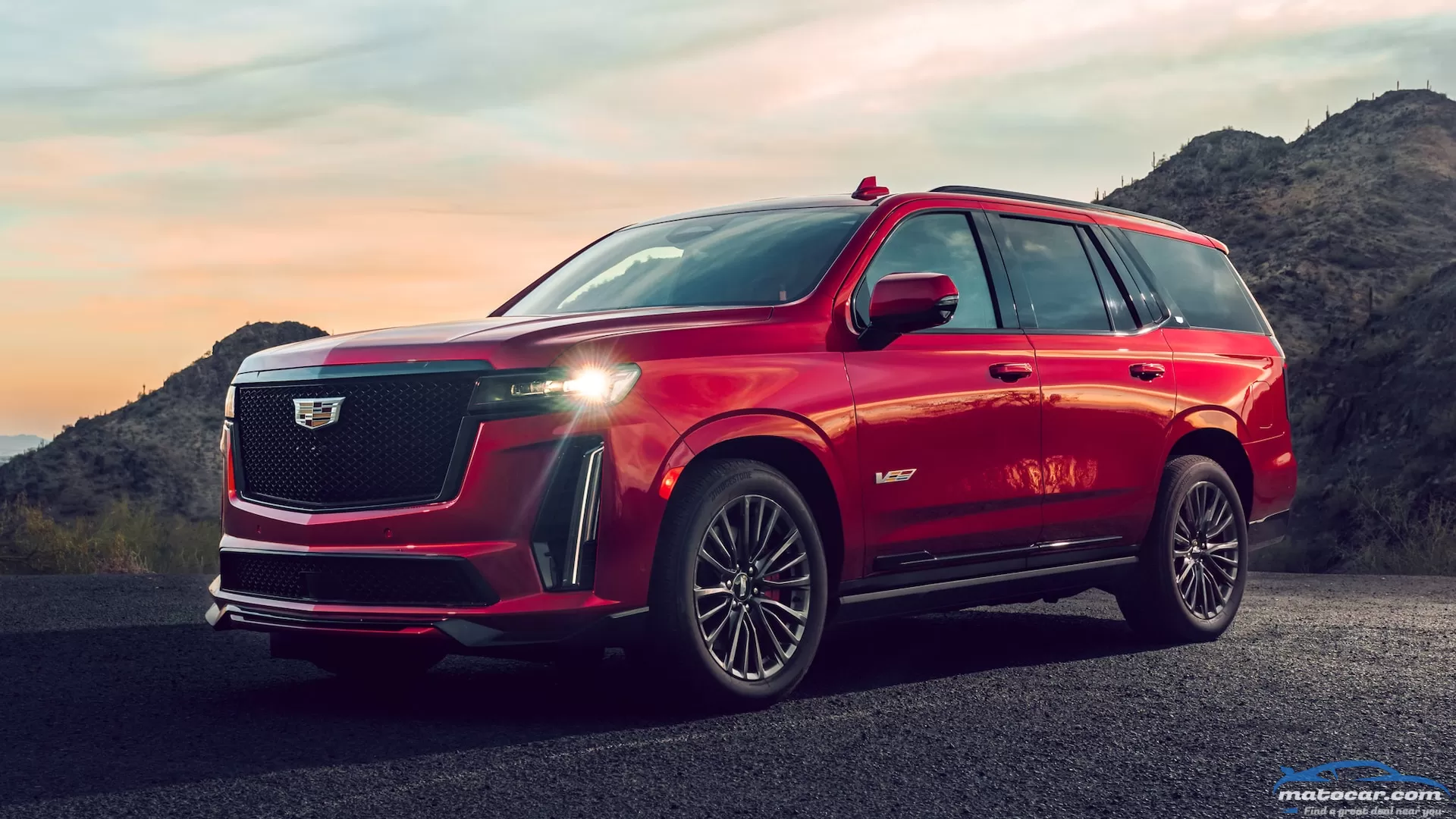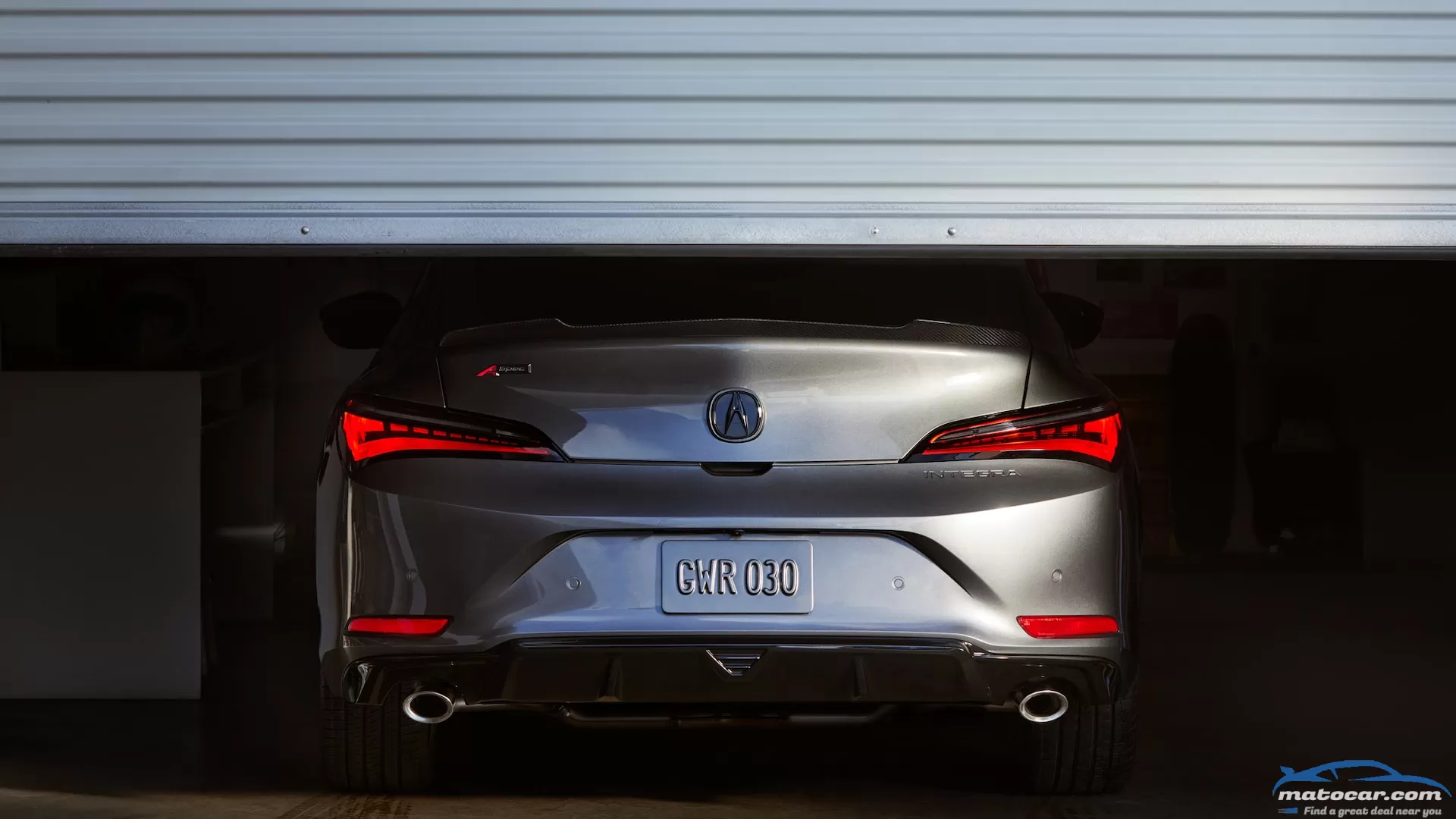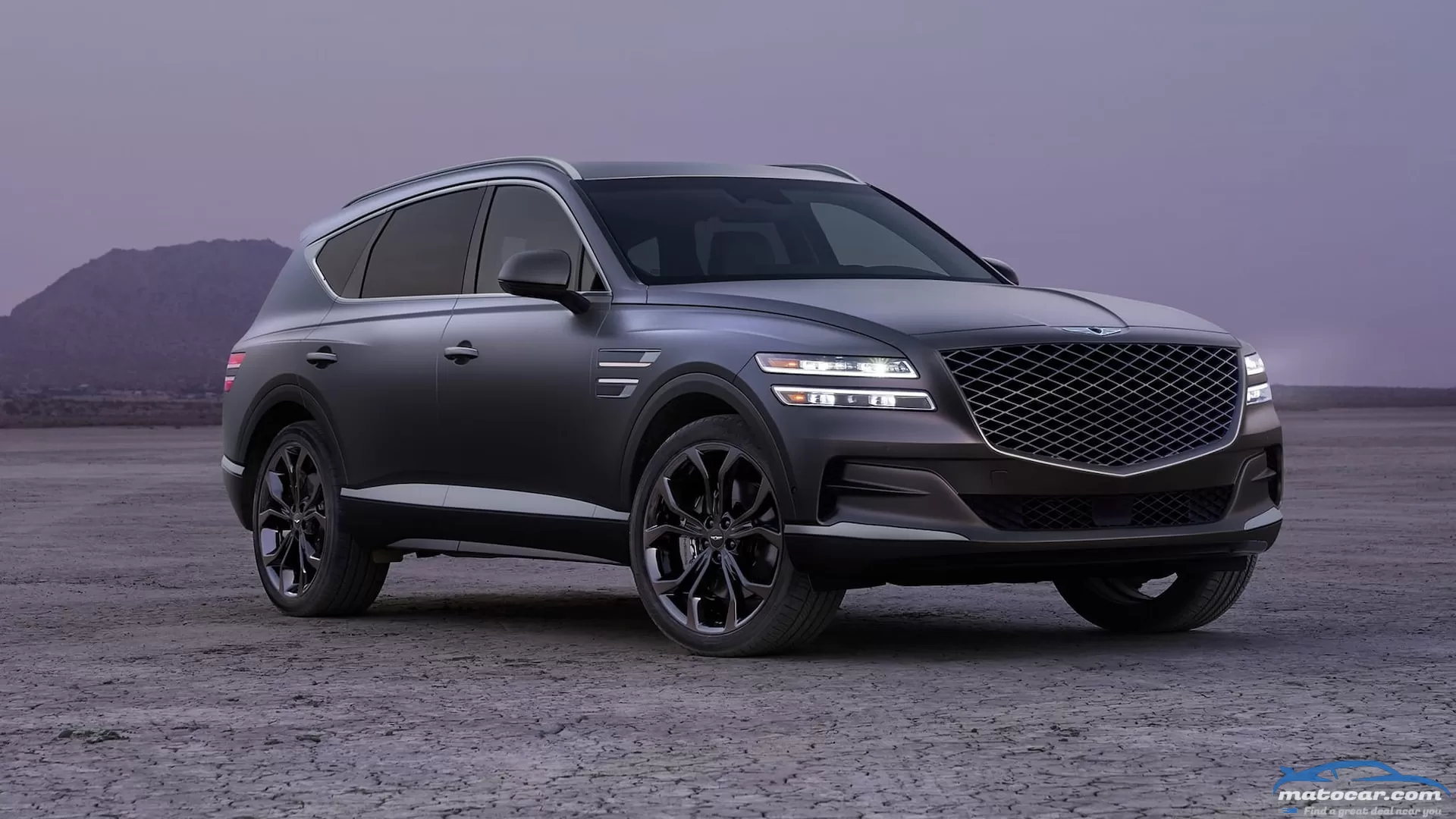2024 Volkswagen ID Buzz First Look: America, Get Ready

VW Bus Meets ID Buzz
What Powers It?
How Far Can This Bus Go on a Single Charge?
Styling the Bus
What's Inside
How Much Is a VW ID Buzz and When Can I Buy One?
2024 Volkswagen ID Buzz (Standard-Wheelbase) Specifications BASE PRICE $45,000-$60,000 (est) LAYOUT Rear-motor, RWD, 2-6-pass, 3-4-door van MOTOR 201-hp/229-lb-ft permanent-magnet-type electric TRANSMISSION 1-speed auto CURB WEIGHT 5,300 lb (MT est) WHEELBASE 117.6 in L x W x H 185.5 x 78.1 x 76.3 in 0-60 MPH 8.5 sec (MT est) EPA FUEL ECON Not yet rated EPA RANGE (COMB) 270 miles (MT est) ON SALE Fall, 2024 Show AllYou may also like
This is a pivotal year for Cadillac—its endeavor into electrification has begun. That charge is led by the Lyriq, an all-new addition to the Cadillac SUV lineup built using General Motors' Ultium battery tech. Yet the brand has not forsaken internal combustion. Rather, for 2023 it celebrates the joys of internal combustion by rolling out a super-powerful, supercharged version of the Escalade. Additionally, the brand's three XT-badged crossovers get a few minor updates. Due to supply chain constraints, the Super Cruise hands-free driving system offered previously is not currently available, but Cadillac is working on changing that. Continue on to see everything new on 2023 Cadillac SUVs.
If you were to find yourself beneath a new 2023 Acura Integra—or the mechanically related Honda Civic Si—we sure hope it's not because you were just run over. In that case, you might have more pressing things to worry about than the odd routing of the dual exhausts under the back bumper. But, hey, pretend you're on the ground, under an Acura or a Honda, wondering why there are pipes aft of the exhaust outlets shapes like curly fries. We were similarly curious (having put ourselves on the ground, under an Acura Integra, on purpose) and did some digging with Acura for answers.What Does a Normal Exhaust Look Like?Normally, exhaust piping follows relatively straightforward routes from the engine to wherever the gases are intended to exit—usually the car's rear end. This typically manifests as straight-as-possible piping leading from the headers, which collect gases from each of the engine's cylinders in individual pipes and merge them into one or two outlets that flow into a catalytic converter, to a series of resonators (for shaping or quieting the noise) and mufflers and, finally, the tailpipes.There are a few bends here and there, mostly so the piping can clear things like the rear suspension, the fuel tank, or other obstacles, but conventional wisdom holds that they don't double back on themselves or otherwise make any unnecessary trips side-to-side.How the Acura Integra's Exhaust LooksThe Integra's post-cat piping (aft of the catalytic converters) is a bit different. As we mentioned previously, this setup is nearly identical on the Honda Civic Si, which shares a platform, engine, transmission, and general layout with the new Integra. While the piping follows a relatively traditional central pathway rearward, toward the back of the Integra, via a small tunnel, upon reaching the rear axle area, it splits into a T-shape, with one pipe turning to the right and another to the left.These two pipes bend slightly rearward and lead to small resonators, one per side, before taking a 120-ish-degree bend toward the vehicle centerline, followed by another (by which point the pipes are now flowing toward the front of the car), followed by another bend that points the piping back to the side of the car, and finally a gentler 60-ish-degree bend that spits the exhaust straight back, out from beneath the Integra's rear bumper. Why?According to Honda, those squiggles in each exhaust outlet are, in fact, silencers. They serve essentially the same function as a muffler—Honda calls them "coiled-type silencers"—and their curious shape is highly intentional. While, like everything on a modern vehicle, their shape is somewhat influenced by the allowable space within the bumper and underbody area behind the rear axle, the specific pathway that piping takes plays a crucial role in the surprisingly guttural low-rpm sound the Integra and Civic Si make.By snaking the exhaust piping into that circular route, Honda is lengthening the exhaust pathway, lowering the resonance frequency without using a traditional muffler . Honda engineers tell us that the design as first installed in the Si also emphasizes the 300Hz to 600Hz frequencies "to deliver a more aggressive sound." Skipping the muffler, Honda also was able to achieve that sound with a 27-percent increase in exhaust flow.Good Vibes, Different VolumesThe old Honda Civic Si, you'll recall, featured a central-exit exhaust that spit gases from two tailpipes clustered at the center of the bumper. Compared to the new Si and its Integra sibling, it used two large mufflers in a somewhat unusual configuration: The same central post-cat piping flowed into a T-split, with each pipe flowing into the end of a transversely arranged muffler, one on each side of the car. Gases exited those mufflers about an inch from the inlets, reforming into a T before the piping exited the back of the car.Doing some visual measurements—okay, by the seat of our pants here—the new, muffler-less exhaust setup has more piping. I.e., it's longer, mostly by replacing the old car's length of muffler with pipe, and then spinning that around into loops at each rear corner of the car. It's cool to see the progression of this concept by the engineers, as the new and old setups are clearly somewhat related, only the new version sounds much better, particularly at idle and lower engine speeds. And that's all things being equal, literally. The new and old Si, and by extension, the Integra, utilize the same turbocharged 1.5-liter I-4 engine, and the 11th-generation Civic's platform—again, shared with the Integra—is a modified version of the 10th-gen setup. We didn't note any untoward booming, either, despite the exhaust note being audible in both the Honda and Acura at highway speeds.For higher-rpm duty, Honda and Acura lean on Active Sound Control—in essence, augmented engine noises and, in the Acura, some active sound cancellation via the audio speakers—to amplify good noises and tamp down on less desirable ones. The tuning of these setups are different in each car; the Honda notably amplifies the engine note, more so in its Sport drive mode. In the Acura, we're told that augmentation was turned way down, with the focus pivoted from outright sporty volume to shaping the noises already in play for a more refined effect.Of course, the sounds made by the 2023 Integra or the Honda Civic Si are only small parts of both compact cars' appeal. The Si is clearly sportier than the Integra, with a firmer ride and louder augmented noises and no available automatic transmission (you'll get the best-shifting six-speed manual available this side of a Porsche and like it), while the Integra delivers most of the Si's athleticism with greater overall comfort, refinement, and richer features. Both are fun to drive, attractive small cars. And owners of either one can blow plenty of hot gas about how weird their exhausts are.
Genesis is no amateur at creating vehicles as tailored for being driven as being chauffeured in. The Genesis G90 is as comfortable as flagship sedans get, but the automaker is expanding its first-class rear-seat horizons—this time with its flagship SUV. Enter the 2022 Genesis GV80 Prestige Signature, a four-passenger, two-row-only version of the luxury crossover that will serve as the pinnacle of the GV80 lineup.The GV80 Prestige Signature builds on the 3.5T Prestige trim, adding a wireless charger and captain's chairs in the second row and five-spoke dark finish wheels. Customers will only be able to pick between two exterior matte colors (Melbourne Gray and Matterhorn White), and two interior choices (Black with Olive Ash and Ultra Marine Blue/Dune with Olive Ash). Genesis also added a matte chrome trim to distinguish the fancy models from other GV80s.While Genesis hasn't revealed any pictures of this specific model's rear seats, we presume that area will look very similar to the Prestige Signature model sold overseas and pictured above. (The global version has a third row.) A center console between the two seats will allow backseat passengers to control the infotainment, and they'll have their own climate-control system. Although the model sold elsewhere has a rear-seat entertainment package, it doesn't look like we'll get that here. Besides enjoying a more comfortable seating position, those traveling in the rear will have access to Relax Mode, which reclines the seat to your preferred position.Under the hood, the Prestige Signature will be powered by the 3.5-liter twin-turbocharged V-6 engine found across the lineup and which makes 375 horsepower and 391 lb-ft of torque. An eight-speed automatic transmission sends power to all four wheels via standard all-wheel drive.A total of just 600 GV80 Prestige Signature models will be sold in the U.S., each one carrying a $78,295 price tag. That's a $4,500 increase from the Prestige model. The 2022 Genesis GV80 Prestige Signature is starting to arrive to dealerships now, and we hope to drive it—or be chauffeured in it—in the coming weeks.




0 Comments